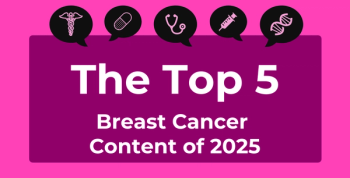
What Is Coming in Specialty Pharmacy? A Look at the Near-Term Drug Pipeline
AMCP Managed Care & Specialty Pharmacy Annual Meeting 2016 kicked off by delving into the near-term specialty pharmaceutical pipeline with Aimee Tharaldson, PharmD, senior clinical consultant of emerging therapies at Express Scripts.
AMCP Managed Care & Specialty Pharmacy Annual Meeting 2016 kicked off by delving into the near-term specialty pharmaceutical pipeline with Aimee Tharaldson, PharmD, senior clinical consultant of emerging therapies at Express Scripts.
She kicked off the session with a discussion on competition, which will increase in the coming years. There are 40 patent expirations through 2020, which represents a $16 billion opportunity for generics.
In addition, there is a lot of opportunity for biosimilars, with 56 patent expirations through 2020, which represents a $43.8 billion opportunity. However, she noted that just because there is a patent expiration date does not mean a biosimilar will be launched at that time.
For example, Inflectra was approved April 5, 2016, with a possible launch date 180 days after approval, which would be October 2, 2016. While Pfizer and Celltrion are planning on launching in 2016, Dr Tharaldson explained that litigation could delay the launch.
There are an additional 6 biosimilars awaiting approval in 2016: Sandoz’s etanercept (biosimilar to Amgen’s Enbrel); Sandoz’s pegfilgrastim (biosimilar to Amgen’s Neulasta); Amgen’s adalimumab (biosimilar to AbbVie’s Humira); Apotex’s grastofil (biosimilar to Amgen’s Neupogen); Apotex’s pegfilgrastim (biosimilar to Amgen’s Neulasta); and Pfizer’s retacrit (biosimilar to Amgen’s Epogen and Janssen’s Procrit).
“But with all of these, there is a lot of uncertainty,” Dr Tharaldson said, adding that there will “be a lot of legal hurdles to get these products to market.”
When biosimilars first come to market, they will initially act like competing brands with a price discount of 15% to 30%.
Dr Tharaldson also took the time to discuss orphan and cancer medications, which is a key specialty pharmaceutical trend. Although orphan drugs treat small populations, they are very expensive and 30% of orphan medications are blockbusters with annual sales greater than $1 million.
“So it’s lucrative for manufacturers to develop orphan medications; it’s also great for patients that those conditions,” she said.
More than one-fourth of specialty drugs in the pipeline are for orphan indications. Another 25% of specialty drugs in development are cancer drugs.
Dr Tharaldson ran through some of the specialty drugs in the pipeline for a variety of diseases. She highlighted cancer drugs in the pipeline, of which there are so many she didn’t even include a full list of the drugs in the near-term cancer pipeline. She explained that many of these drugs are breakthrough therapies and nearly all of the ones she showed were targeted therapies.
In hepatitis, there are already a number of very effective treatment options available to treat all the different genotypes, but the standard of care is rapidly evolving.
“Looking forward we’re going to see pan-genotypic regimens,” Dr Tharaldson said. These upcoming drugs will be able to treat genotypes 1-6 and will require shorter treatment durations.
Gilead has a drug that is very effective for treating all genotypes, and it will have the market to itself for a while. Velpatasvir with Sovaldi is expected to be approved June 28, 2016, while competitor drugs treating all 6 genotypes probably won’t be approved until late 2017 or early 2018, Dr Tharaldson said.
As of right now, there don’t seem to be any regimens that reduce treatment to 4 or 6 weeks. There is an injection drug being developed that would reduce treatment duration, but she doesn’t expect to see a 4-week regimen be approved until 2018, 2019, or possibly even later.
Another drug area that Dr Tharaldson focused on was nonalcoholic steatohepatitis (NASH), which is fat in the liver, liver inflation, and liver damage. Currently 6 to 10 million patients have severe NASH, which means there could be a very large patient population.
The large population is a mostly a result of the increase in obesity, which is growing to be one of the leading causes of liver transplant. However, while there is a lot of development going on for drugs to treat NASH, these have a slightly longer timeline and are not expected to reach the market until at least 2018.
Newsletter
Stay ahead of policy, cost, and value—subscribe to AJMC for expert insights at the intersection of clinical care and health economics.









































